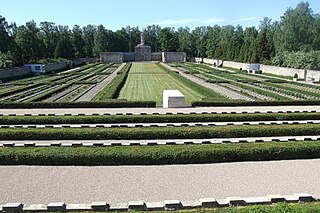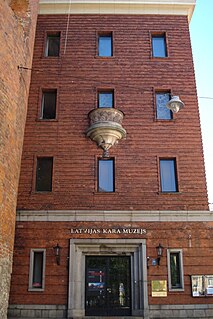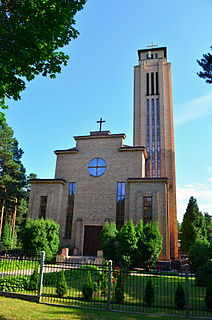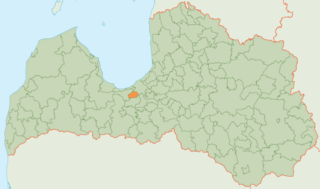
St. George's Church (Latvian : Svētā Jura baznīca) used to be a catholic church in Riga, the capital of Latvia. The church building now houses the Latvian Museum of Decorative Arts and Design and is situated at the address 10/12 Skārņu Street. [1]
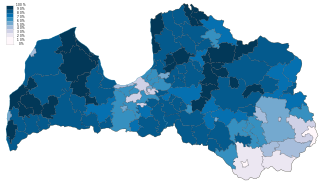
Latvian is a Baltic language spoken in the Baltic region. It is the language of Latvians and the official language of Latvia as well as one of the official languages of the European Union. It is sometimes known in English as Lettish, and cognates of the word remain the most commonly used name for the Latvian language in Germanic languages other than English. There are about 1.3 million native Latvian speakers in Latvia and 100,000 abroad. Altogether, 2 million, or 80% of the population of Latvia, speak Latvian. Of those, 1.16 million or 56% use it as their primary language at home. The use of the Latvian language in various areas of social life in Latvia is increasing.

A church building or church house, often simply called a church, is a building used for Christian religious activities, particularly for Christian worship services. The term is often used by Christians to refer to the physical buildings where they worship, but it is sometimes used to refer to buildings of other religions. In traditional Christian architecture, the church is often arranged in the shape of a Christian cross. When viewed from plan view the longest part of a cross is represented by the aisle and the junction of the cross is located at the altar area.
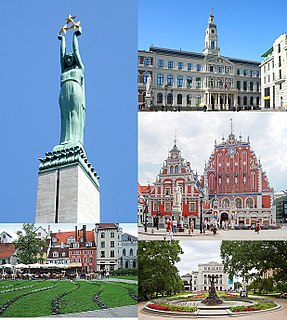
Riga is the capital and largest city of Latvia. With 637,827 inhabitants (2018), it is also the largest city in the three Baltic states, home to one third of Latvia's population and one tenth of the three Baltic states' combined population. The city lies on the Gulf of Riga, at the mouth of the Daugava. Riga's territory covers 307.17 km2 (118.60 sq mi) and lies 1–10 m above sea level, on a flat and sandy plain.



